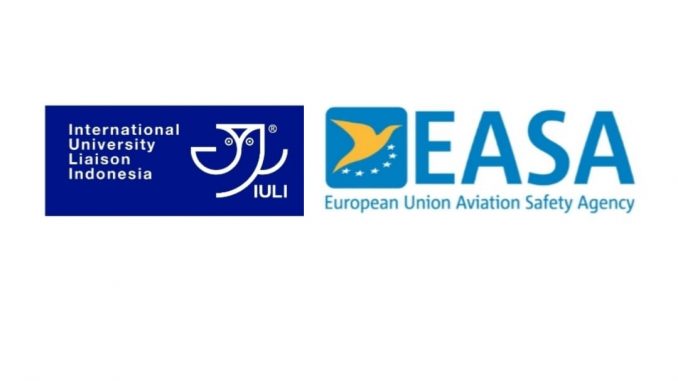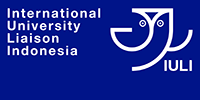
The Higher Education for AVIAtion Profession (HE-AVIAP) seminar will kick off at the Le Meridien Hotel in Jakarta this week. This prestigious seminar is jointly organized by IULI and the EASA. Everyone in the aviation world is familiar with EASA, but for the academic world it is in need of an introduction and a thorough explanation, thus IULI and EASA are collaborating in this joint event.
EASA stands for European Aviation Safety Agency and is the aviation authority of the European Commission, which is in charge for rules and regulations regarding aviation and aviation safety. EASA was established in 2002 by the European parliament and the European Council as the European Union needed a central unit to setup rules and regulations for aviation in a consistent way. Before that each EU-country has had its own Civil Aviation Authority (CAA) with own responsibilities and partly own rules. As aviation is international by nature it is evident that aviation needs harmonized rules and regulations all over Europe and beyond. The national CAA´s still exist in Europe, but recently they have reduced responsibilities and tasks.
The EASA was initially designed to oversee and regulate only Aircraft Operations and Flight Crew Licensing, but in 2009 the range of competencies was extended to aerodromes, air traffic management and aircraft navigation services. Thus, today, EASA has a very comprehensive scope of competencies in Aviation. Any European company in aviation must be approved and certified by EASA, any aircraft and aircraft part used in the European sky must be certified according to EASA-standards and pilots, mechanic or air traffic controllers, who want to work within the European Union must be licensed according to the EASA-rules. This is also true for flight schools and all training organizations providing training for aviation professions. To cope with that EASA employs more than 800 aviation experts and administrators from its headquarter in Cologne, Germany.
The EASA has the same position as its US counterpart the Federal Aviation Authority FAA in the United States of America, which was setup in this current stage in 1967. FAA and EASA are partners as both have the same duties and responsibilities, just for different regions. But in some way they are also competitors as both authorities have the interest that their rules will also be applied in the other parts of the world. That’s a natural consequence of harmonization as aviation is global and European pilots and aircrafts are travelling all over the world.
In this course EASA has setup a project to enforce the institutional and industry relations to South East Asia. Within this running project establishing links to educational institutions in South East Asia is one of the targets. On the other hand, IULI is as well the result of European effort in the establishment of a university according to European Higher Education standards. It was obviously a good idea to align both projects in the aviation domain. IULI operates an innovative bachelor-course on Aviation Engineering (AVE), which might be a prototype for further dissemination in South East Asia; IULI has already a pioneering role here, establishing university education and joint degrees with the European Technical university in Ilmenau and IULI runs a current project, funded by the German Academic Exchange Service DAAD to establish an Aviation Engineering degree according to European standards. Thus, it was just consequent to align these both projects on aviation. As IULI has strong links to European universities, but is located in South East Asia, with a network to South East Asian universities the resulting decision was to bring these efforts together and to organize a joint seminar in Indonesia. This is why EASA is partner for this seminar and this why Jakarta was chosen as the venue for this important seminar.
Related Posts
- Dr.ir. Soerjanto will support the International IULI-EASA Joint Seminar
Our rector Dr.Ir. Tutuko Prajogo, MSMfgE, the head of the Aviation Engineering study program, Mr. Neno Ruseno and Ir. Setyo Utomo, MSc., (Licensed Pilot and former Flight…
- OFSE
Our students are having their OFSE (Oral Final Study Examination) this week. For this exam, external examiners from our partner universities in Europe and professionals…
- National Aviation Seminar
Mr. Neno Ruseno, head of our Aviation Engineering study program attended a national seminar on March 1st 2018 at the Novotel Hotel Tangerang about Indonesian…
